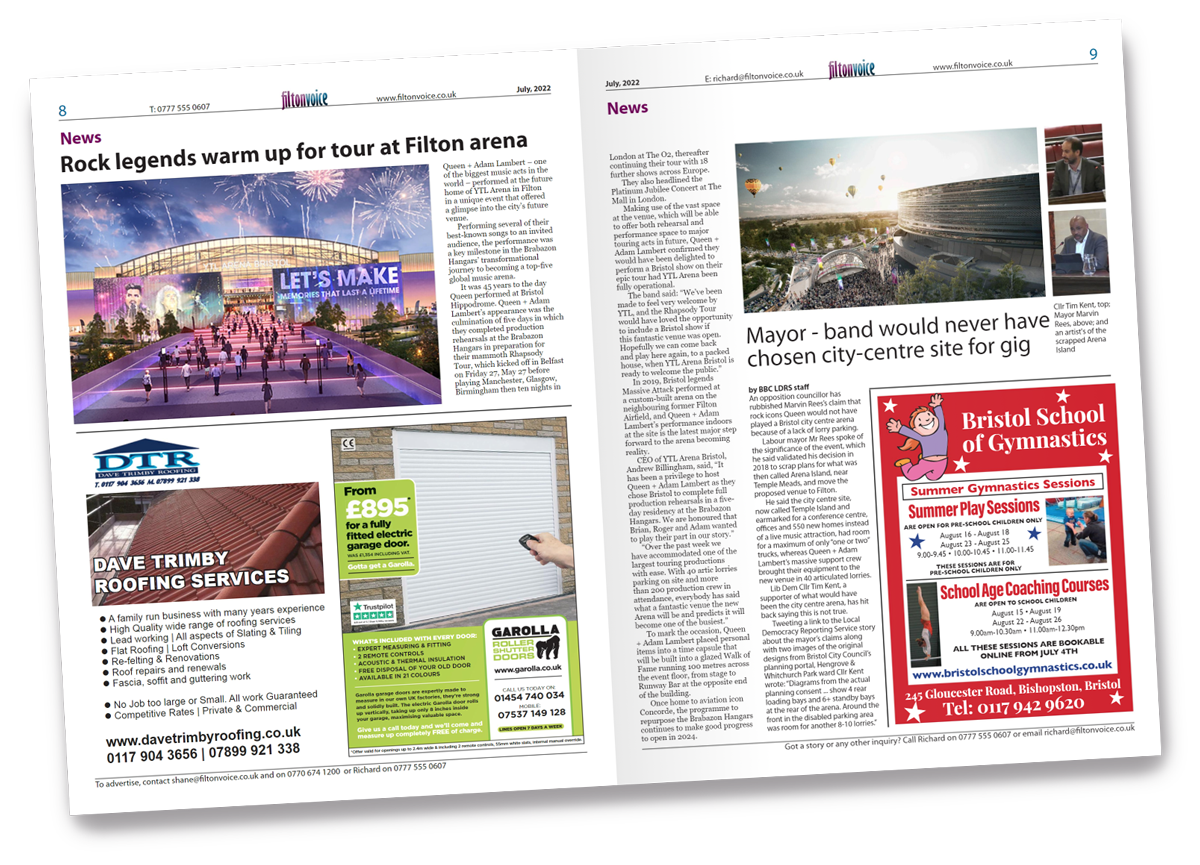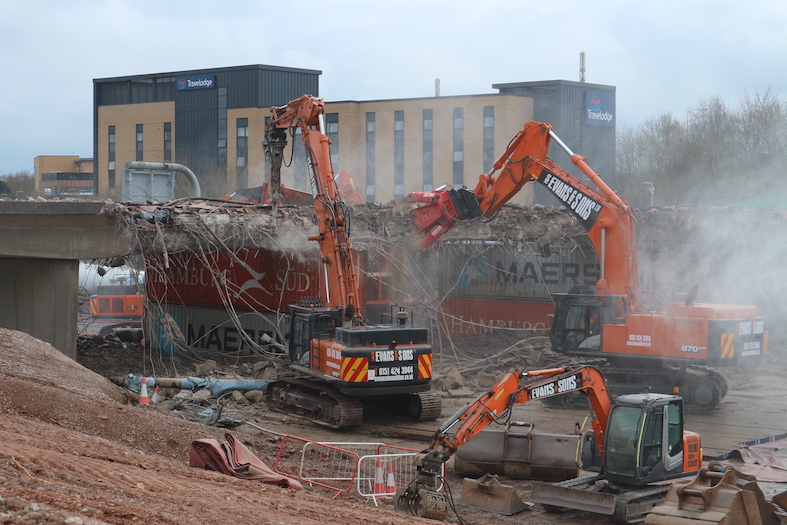THE bridge that carried the main road from Downend to Yate over the M4 has been reduced to rubble after a round-the-clock demolition operation.
The motorway was closed between the Bristol and Bath junctions for nearly 60 hours while a team of 45 contractors worked in 12-hour shifts to bring down the concrete and steel Badminton Road bridge, which was closed to motor traffic after being declared unsafe by inspectors in 2023.
Motorists, cyclists and pedestrians now face another year of waiting until the replacement bridge is expected to be ready to use.
During that time a 50mph limit will be imposed on the M4 past the site, and there will be at least one and possibly two more weekend closures to install the new bridge.
The operation to remove the bridge, which carried the A432 across the M4 next to the Wick Wick roundabout, started at 7pm on Friday March 21, when the motorway was closed to traffic so that workers from contractor Taylor Woodrow could move in.
National Highways, which is responsible for the bridge and M4, says the closed stretch of motorway usually carries 3,000 to 4,000 cars per hour at peak weekend times.
Although drivers had been advised to avoid the area if possible, over the weekend there were queues along the diversion route on the M32, the Avon Ring Road between Hambrook and Warmley, on the A420 between Warmley and Wick, and on the A46 approaching Tormarton.
Traffic was also heavy on roads used by drivers trying to avoid the official diversion, with queues on Westerleigh Road in both directions approaching the Henfield Road and Westerleigh traffic lights, and between Codrington and the A46. Drivers were also queuing between Hinton and the A46.
Once the M4 shut, piles of railway sleepers stacked next to the hard shoulder were moved onto the motorway to create a 1,600 square metre “mat” under the bridge to protect the road surface.
Workers added 400 tonnes of aggregate and placed a row of shipping containers on top of that, to absorb the impact and break up the concrete bridge as it came down.
Excavators with pneumatic drills and claw-like crushers moved in to cut through the concrete sand steel cable bridge, which was built in 1966 and intended to last 120 years.
Work to take down the deck lasted throughout the Saturday, and the sound of pneumatic drills could be heard across Downend into the early hours of Sunday morning.
By lunchtime that day most of the structure had disappeared, as rubble was taken away to be separated into concrete and steel for recycling.
The motorway reopened early on the Monday morning.
National Highways’ engineering manager for structures Terry Robinson said about 2,500 tonnes of material had to be removed.
Workers took asbestos pipes out of the bridge before demolition started.
Although an exclusion zone was set up around the demolition site, National Highways set up a temporary building nearby where passers-by could watch a live video feed.
Many people walked onto the Church Lane bridge between Downend and Moorend to watch.
Mr Robinson said a new bridge has been designed and National Highways is close to choosing a UK-based firm to build it. The cost is expected to be around £20 million.
He said the new bridge’s beams would be made from low-maintenance ‘weathering steel’, which has a specially-formulated layer of stable rust that seals off the rest of the metal from the elements.
It is being designed to last 120 years – the same as the old bridge, which was condemned after “accelerated deterioration and cracking” was found in the concrete and steel cable structure.
The new one will not have moving parts such as bearings and joints that need to be replaced, as the whole structure is designed to expand and contract as temperatures change.
It will be 4m wider than the old bridge, with the same space for road traffic but extra room to carry wider cycle and pedestrian paths.
Mr Robinson said: “When it’s finished it will be a better facility for everyone. It should never need painting, although it will look rusty!”


